- James Lehman
- http://www.edci.purdue.edu/faculty_profiles/lehman/index.html
- Professor and Associate Dean
- Science Learning through Engineering Design
- https://stemedhub.org/groups/sled
- Purdue University
- Brenda Capobianco
- Professor
- Science Learning through Engineering Design
- https://stemedhub.org/groups/sled
- Purdue University
Public Discussion
Continue the discussion of this presentation on the Multiplex. Go to Multiplex



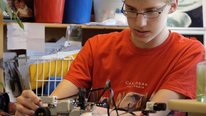
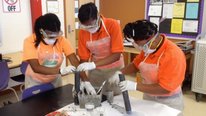
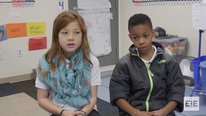
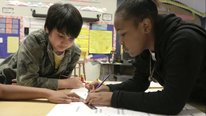
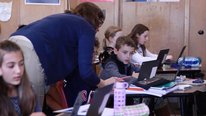











Julie Steimle
I agree with the teacher’s statement, “Students who are not typically good at school are good at SLED.” We hear similar testimonials in our project. Is there a way that you able to quantify that sort of impact? I am curious because we are looking for ways to do so in our project.
James Lehman
Professor and Associate Dean
Thanks for the question Julie. We have not found a way to quantify this particular impact of the project, but we hear it so often from our participating teachers that we thought it was important to mention in our video. There seems to be a fairly widespread perception among our teachers that these hands-on, engineering design activities often allow students who may not ordinarily excel in the classroom to shine. How are you thinking about trying to capture this phenomenon?
Julie Steimle
One middle school in our network had a STEM track in which any student could voluntarily enroll (not just for gifted students), as well as a traditional track. They tracked fewer disciplinary incidents for students in the STEM track. I was curious if others found a way to quantify student engagement as that is always something we are debating in our project.
James Lehman
Professor and Associate Dean
Welcome to this video about the Science Learning through Engineering Design (SLED) Project! Our project is focused on using engineering design as vehicle for helping students learn science in grades 3-6. This video provides a brief overview of the project and includes a classroom example where students applied their learning about simple and compound machines to design a way to help a large breed dog get into and out of a vehicle. A couple of comments from participating teachers are also included.
We invite any questions you may have about the project or the introduction of engineering design in the elementary grades.
Jennifer Adams
Associate Professor
Very promising project. In is nice to see teaching engineering and science in action along with the solving of real-world, quality of life problems (at least from the dog example) but not overwhelming issues. The kid’s reasoning in the video was great and shows an example of what students learn from engaging in the project. I would like to hear more about what guided your approach to this project (literature/research, lessons from prior work, etc.)
James Lehman
Professor and Associate Dean
Our project co-leader Brenda Capobianco was working with teachers in a local school on engineering in the elementary grades and did research on elementary students’ conceptions of engineers. We drew inspiration from prior work on design-based learning at higher grade levels from researchers such as Janet Kolodner and David Fortus as well as project-based science learning (e.g. Joe Krajcik and colleagues). Our state, Indiana, adopted elementary science standards incorporating engineering prior to NGSS. These influences led us to develop a focus on using engineering to address science learning in the elementary grades.
Jennifer Adams
Associate Professor
Thanks! Great work and I reiterate liking the real-world connections.
Teresa Eastburn
Digital Learning & UCAR Connect Lead
I love the fact that SLED is couched in a problem-based design scenario that the students must solve. Have you seen any differences in engagement between male and female students? What about in the group dynamics between male and female or in self efficacy with upper elementary females? Is this an area of interest in your research and if so, how are you assessing the program’s engagement of female students in particular? Thanks!
James Lehman
Professor and Associate Dean
We intentionally created design challenges that we hoped would appeal to girls as well as boys. We tried to avoid stereotypical engineering activities (e.g. toothpick bridges, robots) that might appeal more to boys. In the example in this video, the task involves helping kids with a dog which involves an ethic of care that we think appeals to girls (as well as boys). While our research questions are not focused specifically on gender, we do have the data to explore the question, and we appreciate your suggestion to look at the gender issue.
Roger Taylor
Assistant Professor
Hello James, could you explain more about the SLED project and how it compares with other STEM design-based programs?
James Lehman
Professor and Associate Dean
Roger – I think SLED was the first MSP project, and remains one of just a few nationally, that focuses on the integration of engineering design at the elementary grade levels. Our project has had three main thrusts: (1) development of design-based curricular units that address science and sometimes math learning, (2) professional development of in-service and pre-service teachers, and (3) collection of evidence of impact. We have developed more than 30 design-based units and reached many teachers and students in Indiana. There are other curricular materials for engineering in the elementary grades. The Boston Museum of Science EiE curriculum is probably the best known. I think what distinguishes SLED’s materials from some other elementary engineering activities is an overt focus on linking to science concepts. As one of the teachers in the video noted, our materials really help teachers meet science standards; it is more than just having kids just build things. You can access our design materials at https://stemedhub.org/groups/sled.
Roger Taylor
Assistant Professor
Hi James, thank you for this additional information.
Lauren Allen
Postdoctoral Research Associate
I really like the example project in this video, and especially appreciate that designers of SLED were thoughtful in identifying unique design challenges that are relevant to students’ age group and don’t heavily lean on the typical engineering/physics examples like sports and robots. Thinking about gender-based interests is an important way to make STEM learning “for all”, I wonder if you have also thought about other underrepresented groups or incorporated any facets of culturally responsive teaching into the SLED units?
James Lehman
Professor and Associate Dean
Lauren – my co-presenter, Brenda, responded but created a new post rather than linking to your question. Her response is below.
Matthew Dietz
James, I can see the potential benefits of STEM in delivering improved skills at problem solving, critical thinking, etc. As a middle/high school Technology Education instructor I am interested in knowing what you see as the “next” step or how you would like to see the ground work you laid in elementary school expanded at the higher grade levels. Would you suggest any particular resources? Thank you
James Lehman
Professor and Associate Dean
Matthew – there is quite a bit already available related to engineering design at the middle and high school levels. The Project Lead The Way curriculum, for example, is very popular in our state. In fact, several of our partner school districts already participate in Project Lead The Way, and the administrators like the fact that SLED can help develop knowledge and skills in younger students that can carry over to PLTW. With the new NGSS standards, there is also more attention being paid to the notion of integrated STEM, where different STEM disciplines can be addressed together, often through the vehicle of authentic problems. At Purdue, we are working on a supplemental teacher license (i.e. endorsement) program focused on preparing teachers to teach integrated STEM.
Julie Steimle
James, I am curious. Is the endorsement you mentioned recognized by Indiana’s Department of Education? If so, can you please provide more information?
James Lehman
Professor and Associate Dean
Julie – Not yet. The planned endorsement is still in development, and the goal is to get it approved by the state as a supplemental licensure area (Indiana does not have endorsements) at both the elementary and secondary levels. Our colleague Lynn Bryan is spearheading this effort, and I’m sure she would be happy to provide more information.
Brenda Capobianco
Professor
My comment is in addition to what Jim described in his response. We wanted to humanize engineering for both the teachers and students. In this particular task with the dog, we also enlisted the help from Purdue’s Vet School and invited a vet tech to talk with teachers about how engineers design large animal transport devices. This demonstrated the interdisciplinary nature of engineering.
Brenda Capobianco
Professor
Hi Lauren – thank you for your comment. This is an important feature of design to consider. We have several tasks that focus on more culturally relevant contexts. We have one task called Bio Inspired Flower that incorporates the concept of capillary action with flowers. We situated the design brief in the context of Cinco de Mayo and interestingly, we have observed teachers create curriculum and pedagogies that wrap around this brief. Humanities teachers work closely with STEM teachers to discuss the history of Cinco de Mayo, the cultural practices associated with the event, and advancements in engineering in the Mexican culture. We provided the platform for the task and we have to credit the teachers for creating more culturally relevant practices around the task.
We also have a water filter task we created after the earthquake in Haiti. The design brief was situated in the notion of agriculture/farming serving as an important practice in Haiti and how dirty water is the resulting effect of the earthquake. How can farmers and community members alike solve this problem of dirty water? We peppered the unit with past and current forms of water filtration technology used in under served communities and encouraged students to think of ways to solve this problem for the Haitian community. Lastly, we discussed the problem of clean water across the world as a grand challenge in engineering.
Jason Karcheski
It seems like it might lend itself to mathematics. Have you integrated mathematics, data collection, and data analysis with activities like the one featured on the video?
James Lehman
Professor and Associate Dean
Jason – yes we have. Although the focus of our efforts is primarily science learning, math is integrated into many of our activities as well. We often use data collection and analysis to test the designs that students create. Teachers often integrate mini-economy elements in design challenges as well by attaching costs to various construction materials so that students are encouraged to solve the design problem as inexpensively as possible. Finally, a few of our activities have a more overt math focus. We have one called Reindeer Habitat that has a biological focus but also requires students to design a habitat by mapping various geometric shapes onto a given space to create a zoo habitat for reindeer.
Jason Karcheski
I have checked out your other resources and I must say they are excellent. I look forward to using them in my 5th grade classroom. Thank you for making them available!
James Lehman
Professor and Associate Dean
Jason – glad that you are interested in using them. We are nearing the end of our project, so will not be producing any new curricular units, but we are planning to make some updates/modifications to some of our units based on feedback from teachers. We are also planning to add some information (e.g., guides, videos) for teachers like you, who are interested in using SLED materials but have not had the benefit of participating in the face-to-face professional development we have done with our teachers.
Further posting is closed as the showcase has ended.